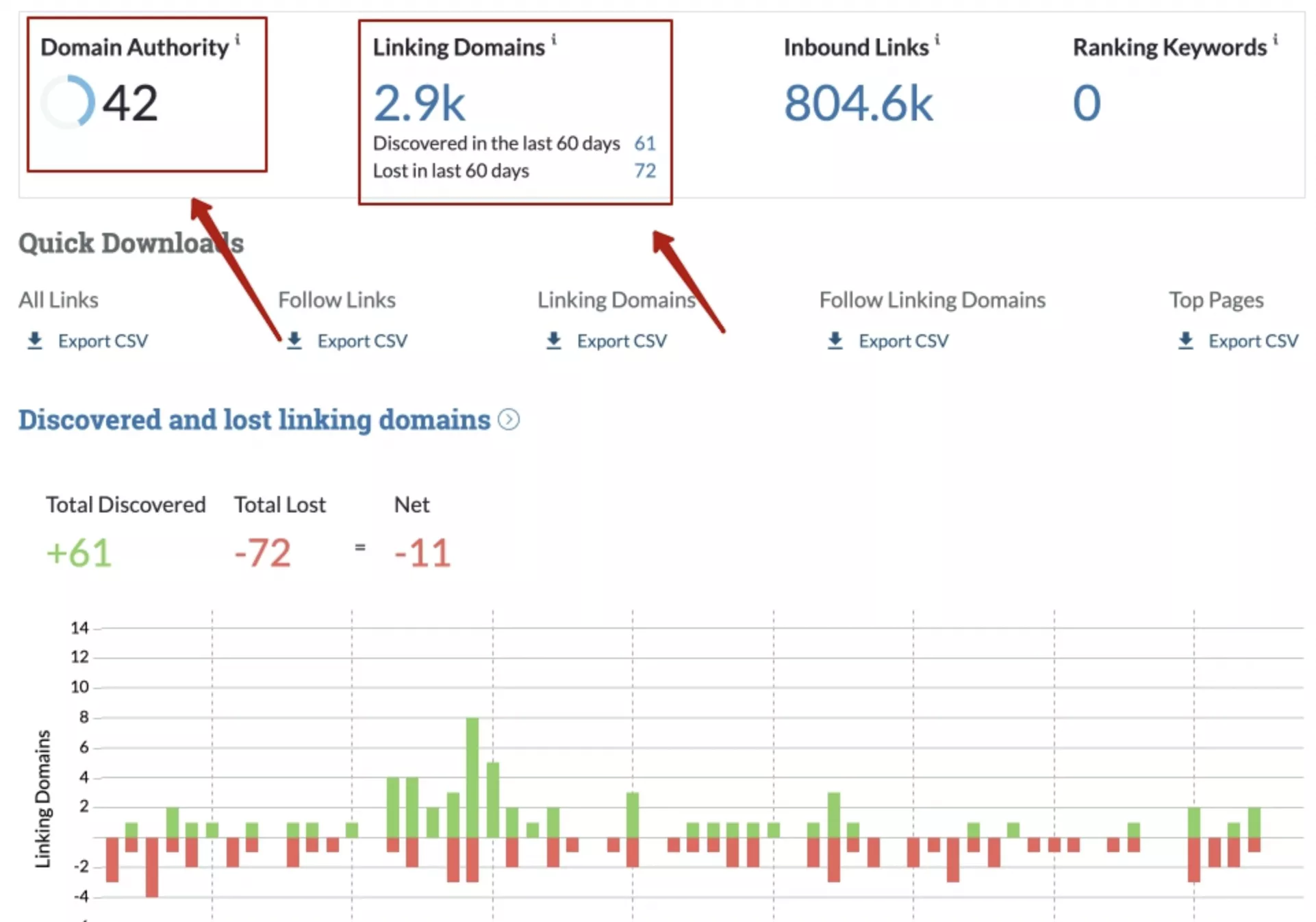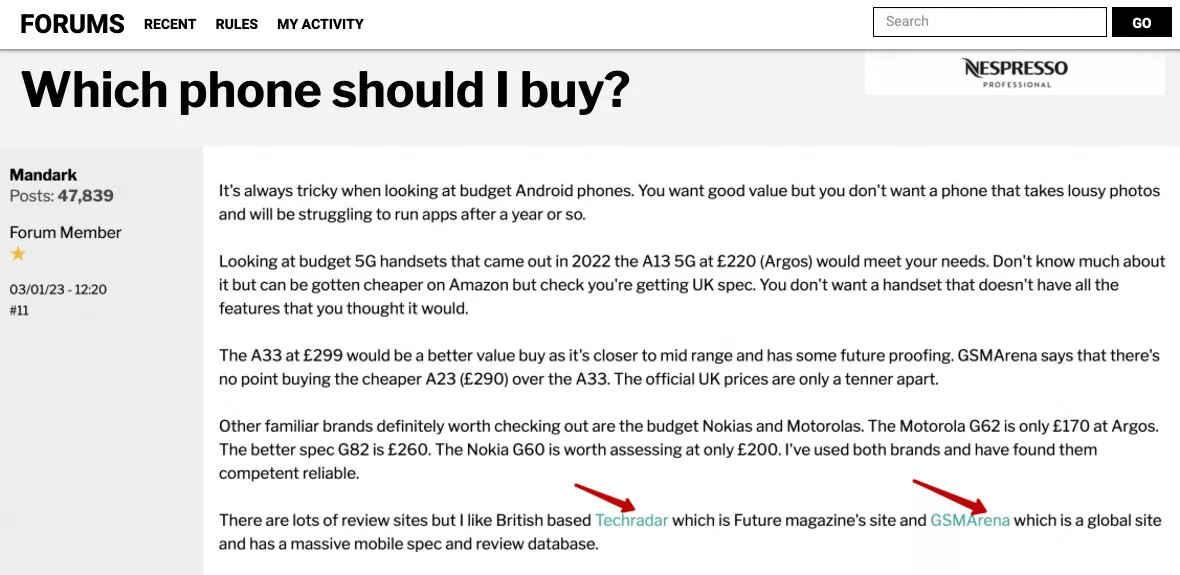What Is Link Building, and How to Get Backlinks Properly
Search engines take into account the presence of backlinks when ranking a website. Therefore, it is no surprise that link building is considered one of the most important website promotion methods and is well worth investing in. In this article, I will explain why you need link building, the different stages of link building, and the best tools to use.
What is link building?
Link building is the process of promoting a website by placing backlinks to it on other web resources. A website's link profile is made up of backlinks that lead to it.
The main goal of link building is to increase the number of high-quality referrals from different platforms. When a search engine like Google sees that reputable resources and forums link to a website, it takes it as proof that the website has high-quality content.
Why perform link building?
If a website has no backlinks, Google will view it with suspicion. After all, when users find something useful, they usually recommend it to others.
No exact number of backlinks will push a website to the top of the search results. Each web resource has its own unique backlink requirements. Therefore, you should take a holistic approach to link building: study your website's topic and target audience, analyze the competition in the niche, and select high-quality websites to get backlinks from.
Remember that Google forbids buying backlinks. Therefore, link building should be organic, invisible, and gradual. If you create a new website and buy a hundred backlinks to it, the search engine will detect this behavior and impose sanctions on your website. There is a chance to get into a shadow ban and lose significant amounts of traffic.
Good versus bad backlinks: how to tell the difference
High-quality backlinks will help your site, while low-quality backlinks, regardless of their number, will only hurt it. Let me explain how to distinguish between them.
High-quality backlinks
They come from reputable and relevant sources, are naturally generated, and can potentially drive valuable traffic to your site.
It can be natural backlinks that a resource receives simply because other companies consider it appropriate to mention them. For example, if an article talks about email marketing using Yespo, it is logical to link to Yespo’s website.
Also considered natural are free backlinks obtained through:
- Sharing articles with backlinks between web resources;
- Joint projects between different companies to place backlinks;
- Writing articles that authors offer to other resources for free.
Purchased backlinks are also considered high quality. Google does not recommend buying backlinks, but most of it are placed in exchange for money, and site owners want to reap the benefits. There are two main ways to purchase backlinks:
- Paid outreach (contacting the site owner directly to discuss the terms of placement);
- Using an intermediary site.
There are intermediary sites that specialize in such transactions. The way they work is simple.
- The owner of site #1 publishes information on the exchange about their readiness to place backlinks for a certain amount of money.
- Site owner #2 wants to buy a backlink. They visit the intermediary site, see a list of sites, filter them according to their own parameters, and make a payment.
- The intermediary site earns a commission on this transaction.
Read more about the importance of selecting quality links in the ME-QR case study.
Low-quality backlinks
These backlinks are irrelevant and can be detrimental to search engine optimization. They are from unreliable sites hosting everything offered and almost no traffic. On such resources, articles about clothes are placed next to casino ads.
Google considers these sites to be spam and suspicious of the resources they link to. Backlinks to your website on these sites will do more harm than good.
Therefore, you should filter your selection of sites well. They should be trustworthy and generate traffic.
Key metrics for backlink quality assessment
Be sure to check the credibility and popularity of the resources you want to work with because the quality of the backlinks you receive depends on it.
1. DR (Domain Rating). An indicator of domain authority in the Ahrefs service. It is measured on a scale from 0 to 100, where 100 is the highest authority. DR is calculated based on several factors, including the number and quality of backlinks pointing to the domain.
2. DA (Domain Authority). An indicator of domain authority in the Moz service, measured on a scale from 0 to 100.
The same domain can have different values for DR (Domain Rating) and DA (Domain Authority).
3. Referring domains. The number of unique domains linking to the website. A domain is only counted once, even if it is linked twice or more. Referring domains are one of the most important ranking factors in search results.
4. Linked domains. This is the number of domains that link to a web resource. Each backlink is counted, even if a domain is linked twice or more.
Types of backlinks
It is worth learning about different kinds of backlinks and anchors because this plays an important role in link building.
Anchor backlinks
1. With keywords. This type of backlink is organically embedded in the text (i.e., the anchor). If you want to place a backlink to the category of cross-country mountain bikes, then it will be placed under the phrase “Cross-Country Mountain Bikes.”
Only the color indicates that it is a link. If you remove it, you're left with regular organic text.
Anchor backlinks tell the search engine what to expect when it clicks on them. If the keyword is “Cross-Country Mountain Bikes” and the clicked link actually opens a page with bikes, this gives search engines a green signal.
The selection of keywords for backlinks is best done by an SEO specialist.
2. Branded anchors. These anchors contain the name of a brand, company, or product. For example, a backlink to the Netpeak website with the anchor “Netpeak.”
3. Generic anchors. These are generic terms that do not contain keywords or other specific words. For example, “Go to the site,” “Here is the link,” and “Read below.”
Anchorless backlinks
URL-backlinks – the page URL is not covered with keywords but simply placed in the middle of the text. They sometimes take up a lot of space.
Image backlinks
These are images that users can click on to follow the link. For example, image backlinks are used to list affiliates or banner ads with backlinks underneath that are only active for the duration of the ad campaign.
Articles with high-quality graphics or statistics also use image backlinks. Users can click on them to learn more about the images.
Backlinks from articles are usually more durable because they are not removed as quickly as images or banners.
Basic link-building strategies and methods
There are many ways to get backlinks. Here are some of the most popular ones.
Outreach
This link-building method involves directly approaching the owners of web resources with a request to place a backlink. It is the highest-quality and most reliable method, but the terms of placement need to be discussed.
- Buying backlinks. For example, you can write an article and offer it to a website for a certain amount of money. Alternatively, you can agree on a long-term special project where the website editors for a reputable domain write the articles themselves.
- Renting backlinks. This involves placing backlinks in an already published article for a certain period of time, such as six months or a year.
- Backlink exchange. This is a mutually beneficial cooperation where platforms publish each other's articles. It is important to choose reputable domains for backlink exchange.
- Content marketing. This method consists of creating irresistible, high-quality content that platforms host for free. It can be articles, videos, webinars, research, infographics, etc.
Crowd
Crowd is an auxiliary method for creating an organic link profile for search engines. This link-building strategy consists of creating comments, responses, and forum feedback. It is very cost-effective, it can even be free if you are willing to place the backlinks yourself.
There are many forums with different discussions, so you have to look for relevant topics where backlinks would look organic. You can also start your own discussion threads.
For instance, if your site sells smartphones, you need to find a forum where a user is asking which one is better to buy. Then, write a detailed response with a link to where it can be purchased.
Forums are constantly flushing their cache, so don't mindlessly post comments and spam. It is more effective to create useful posts so that backlinks stay on the forum longer. In addition, a quality crowd often helps to attract the target audience to the site and generate additional revenue.
PBN (Private Blog Network)
A PBN is a network of web resources created by one owner to promote a particular site. These are usually general web resources about anything globally, and they only publish articles. And they all link to the site the owner wants to promote.
While PBNs are quite effective, it is risky to use them. There is a chance that search engines will detect patterns and impose sanctions.
Drops
Drops are sites created to sell backlinks. They contain articles on various topics and do not care much about the quality of the material. Search engines consider drops to be spammy, so their use may result in penalties.
Stages of link building
The link-building process involves a clear sequence of steps.
Step 1: Analyze your own website.
First, you need to analyze your website's parameters and domain authority to choose donors of approximately the same level.
A donor is a web resource that places backlinks.
You need to understand your website's theme and target audience and identify the priority region for promotion.
For example, if your site sells musical instruments in the USA, it is desirable to link to it from articles in music publications based in the USA. In addition, such sites are visited by the target audience who will be interested in the placed backlink.
Step 2: Perform competitor analysis.
You need to understand your site's main competitors and then download and analyze their donor databases. This will give you an understanding of the number of backlinks they have, their strategy, the platforms they are placed on, their targeted regions, and so on.
You can then create your own link-building strategy based on this data. You can use your competitors' donors in it, but you need to dilute them and add better platforms to make your link profile more effective than your competitor's link profiles.
Step 3: Gather the donor base.
To ensure a potential donor is a good fit, you must first evaluate site's look and answer a few questions.
- What content is being published?
- Is the resource topical?
- Is the topic appropriate for the site?
- Does the site have a target audience?
- Does the site publish spam, advertising, and off-topic content?
- How much advertising does the site have?
Next, use tools like Serpstat, Ahrefs, and Moz. These services will give you a general idea of the site.
Step 4: Select the right sites.
After collecting the database, you need to screen each potential donor for spam. To do this effectively, you should keep several important points in mind.
- Traffic. If a site receives less than 300 unique visitors per month, it is not popular and is poorly ranked. However, this parameter is not exact and depends on the region of promotion.
- The number of inbound links. This figure should be higher than the number of outbound links.
- Sudden changes in traffic indicators. If the website does not have a stable increase in traffic, there is a possibility that it is under sanctions or is manipulating the promotion.
- Poor indexing. If only 20-30% of the site is indexed, it is considered a red flag.
- Poor ranking. If the advertiser has low keyword rankings, it is a sign of low-quality content that does not meet users' needs.
- Inorganic link building. Sharp jumps in the link profile are a telltale sign of this issue.
The bottom graph shows a sharp increase in traffic
Step 5: Place your backlinks.
At this stage, you need to cooperate with the selected platforms and agree on the article's publication, purchase, or exchange.
The process of backlink placement differs from country to country. In Canada, it is difficult to contact site owners. There are few donors compared to the USA, and the process is quite expensive.
The price of backlinks also varies between countries. In one region, many quality donors may respond quickly and are willing to place bcklinks for $10 to $50. But in another, there could be only a few outdated web resources that ask for $500 to place a backlink.
Therefore, it is convenient to have dedicated specialists working with sites in different countries. After all, you also need to know how to approach the communication so that your counterpart understands what you want from them.
Real-life example: Netpeak specialists usually write backlink placement letters in the language of the country where the site owner lives. Then, they would add a note like this: “Sorry for any mistakes in my letter; I used Google Translate.” This shows respect and facilitates further communication.
In most regions, Gmail is the most preferred method of communication, but in some regions, website owners are more likely to respond on various messengers.
Useful link-building tools
It is important to understand that the parameters shown on link-building tools are mere estimates. Only resource owners know the exact numbers that are found on Google Search Console and Google Analytics. That said, many tools will give you estimates that are close to reality. Here are some of them:
- Serpstat. This analysis tool allows you to download the link profiles of competitors in your niche and study their data.
- Ahrefs. The main tool for link builders to analyze the link profile of their own site and the profiles of competitors, analyze keywords and search for potential donors. It is usually used to weed out low-quality sites. It shows the DR (domain ranking), the amount of traffic, and the countries it comes from quite accurately.
- SimilarWeb. This tool helps you to filter out contributors according to the necessary parameters: it shows the amount of traffic, the country where most of the traffic comes from, etc.
- Moz. It shows if the donor is spammy.
You shouldn't rely on just one of these tools. None of them guarantees accurate results, so it is more effective to use multiple tools simultaneously and take all the data into account.
Case Study: In one case, Ahrefs showed ten conversions per month, but SimilarWeb showed 100,000. This indicates that you need to use all possible tools to check the site.
Useful practices
1. It is important to check the overall quality score of donors using Serpstat and Ahrefs.
2. Focus on the country where you are promoting. If it is the USA, the site does not need backlinks from Poland. Be sure to check which country the donor site has the most visitors from.
3. You should use do-follow links (open to Google crawlers and further indexing) for better ranking.
4. There should be more inbound links than outbound links. If a site links to many resources, but almost no one visits it, it gives away its authority and loses weight.
When publishing news with a source, all news sites include the nofollow tag in the link. This signals search bots not to follow the link.
5. The more partners you have, the better. If two sites constantly exchange backlinks among themselves, it will not lead to anything.
6. You need to consistently increase the number of backlinks. You can start with a few a month, then it should be five, ten, fifteen, or more. 7. Backlinks tend to disappear over time: articles get deleted, websites stop working, they get resold, etc.
8. The more authoritative the donor's domain, the better. However, buying or obtaining backlinks on reputable domains can be difficult. Getting backlinks on slightly higher-ranking resources (from your site) relevant to the domain's topic is more convenient.
Read more about link building in our blog:
- How and Where to Post Free Backlinks to Your Website
- Outreach Link Building – Step-by-step Guide
- What is PageRank and How to Find Out Its Value
FAQ
What is link building in simple terms?
Link-building refers to the consistent work of building a network of high-quality backlinks to your website from other web resources.
What is the point of link building?
The number of backlinks from high-quality resources tells search engines about a web resource's authority. Therefore, link building is an important ranking method.
Why is link building important for website promotion?
There are many important aspects of website promotion: design, usability, content quality, etc. Link building is one of them. Website promotion in search engines depends on the quality of a website’s link profile.
Related Articles
How to Set Up Consent Mode in GA4 on Your Website with Google Tag Manager
Let's explore how to properly integrate consent mode in GA4, configure it for effective data collection, and at the same time comply with GDPR and other legal regulations
Display Advertising Effectiveness Analysis: A Comprehensive Approach to Measuring Its Impact
In this article, I will explain why you shouldn’t underestimate display advertising and how to analyze its impact using Google Analytics 4
Generative Engine Optimization: What Businesses Get From Ranking in SearchGPT
Companies that master SearchGPT SEO and generative engine optimization will capture high-intent traffic from users seeking direct, authoritative answers











